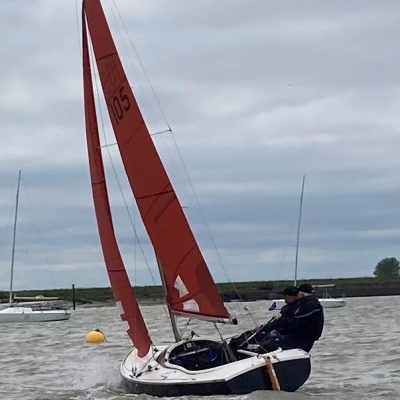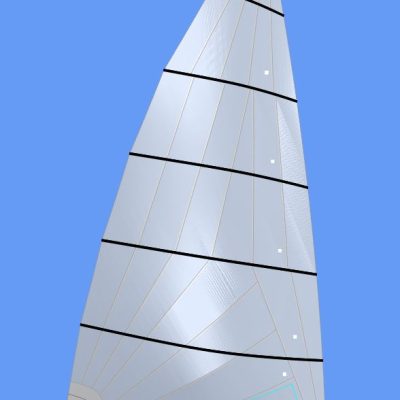-

-

-

-
Last Products
-
 Squib Jib B3
£600.00
Squib Jib B3
£600.00
-
 Squib Mainsail B3
£870.00
Squib Mainsail B3
£870.00
-
 Solo Main Code 7L
Solo Main Code 7L
£1,100.00£935.00
-
The Hyde sail loft was moved to Cebu in the Philippines in 2003. We chose the Philippines because the first language is English, the people are known to be diligent and dextrous, and the low-cost base. Our world-class sail-making facility is wholly owned by Hyde Sails.
The physical working environment was built to our specific sail loft requirements, but equally important is our team of highly skilled sail makers. We have invested in our people providing exceptional working conditions and extensive training. Across the continents, we nurture an open and positive team environment. We now employ over 250 local people in the Philippines and we remain a popular local employer.
“The Filipino’s are diligent and dexterous, and have taken to sailmaking remarkably quickly. Their thirst for perfection is key in maintaining the highest standards of production. Add to that the fact that a huge number of them have many years of sailmaking experience behind them, and the result is a highly skilled and valuable workforce.” Ian Flanders, Sail Loft Manager.
So what happens to that sail before it arrives on your doorstep? We follow the journey of one set of sails in particular, which are set to race round the world on one of the fleet of ten 68-footers poised to compete in the Clipper Round the World Race…
From an idea to new sails...
1. Contact us
One-design production sails can be ordered online, but any custom order starts with a conversation with one of our sales team. All of our sales team are sailors and have sail-making experience and will be your point of contact through the process.
2. Design
The design work is completed in the UK and the sails are manufactured in the Philippines. Once we understand your requirements, for every sail, a design and specification sheet is produced detailing the fabric, threads, and construction requirements. The sheet is a detailed instruction sheet for the manufacturing team.
One of the key components of the design and specification sheet is the complex area of material selection. We stock a vast range of cloth types, weights, and fittings to ensure every customer receives the best sail for their boat.
All sail material is tested to the stretch quality standard agreed with the supplier. Hyde is one of the few sail makers to test stretch quality using the specialist Instron tester. Our standard materials are stored at the sail loft.
3. Cutting
With the design and materials specified the next step is cutting the materials. The loft has three computer-controlled cutters; two laser cutters and one 'pizza wheel' cutter – as the name suggests the third uses a circular blade to cut the cloth and cuts Kevlar and Carbon better than a laser. The cutters work in conjunction with a vacuum bed, which holds the cloth firmly in place to enable it to be cut cleanly. The correct cloth is laid out in the laser cutting area, smoothed out, and the vacuum is switched on. Then the sail design is selected on the computer screen and the cutting begins. Seam allowances, numbers on panels and internal lines are all marked on the sail using a biro.
Both the body of the sail and all the other items, such as the corner patches are cut in this manner. Each panel is numbered according to the specification. Sails vary in complexity; for the Clipper Round the World Race for each spinnaker there were 184 panels taking 16 hours for every sail to be cut.
4. Run-Up
The next step is for the cut panels to be 'run up', or stitched together. For smaller sails seam sticking is done using a special double-sided adhesive tape and brings the panels together to form the sail before they are stitched with a standard flat seam. Larger sails require a stronger manufacturing process so they are put together with a 'French' or 'felled' seam construction, whereby both sides of the cloth are folded when sewing.
For the spinnakers for the Round the World Clipper event the sails were put together in two halves comprising 92 panels each. Typically a spinnaker is put together in a certain order with 75mm seams with 5 rows of 3-step stitching using V46 thread. Specifications for other sails vary, but three-step stitching is the usual stitch for the main body of a sail, as it is stronger and suffers less from snagging than a zigzag stitch, which is used to affix patches. A straight stitch is only rarely used, an example being to attach a boltrope.
For spinnakers, the next stage involves a mix of seam sticking, trimming, and machining. The first job is to join the two clew boxes vertically. Before they are sewn the shape needs to be cut into the sail. This is marked by a plot line which was applied at the laser cutting stage. The curve is cut into each half of the clew box along the joining edge, and seamstick is applied to one side. In the case of the Clipper spinnaker some five rows of sticky, 75mm thick, are applied before the two edges are stuck and machined to complete the clew box. Finally, the five panels (clew box, three mid boxes, and head box) are similarly trimmed, stuck, and sewn horizontally.
5. Marking Round
Once the main body of the sail is complete the dimensions are checked and the outside edge of the sail is trimmed to shape ready for machining. The leech, foot, and spinnaker mid-width measurements are checked. The sail is then folded in half and the two leeches are placed on top of one another. It is then pinned out flat 2-3 panels in from the edge of the sail. A big bendy spline is used to match up the plot lines so the leeches can be trimmed to a fair, even cut line and the leeches are trimmed at the same time through both layers of the sail. The foot is similarly measured and trimmed.
6. Machining
The sail now goes to the machinist to have all patches and tapes applied. The patches will have been constructed separately and are sewn onto the sail using a chessboard pattern of boxes for extra reinforcement.
A spinnaker will have red and blue tape applied to each leech and luff and white tape to the foot. Other sails may have velcro pockets added at this stage as well.
The role of the finisher is to put the final elements on the sail such as eyes, rings, hanks, leech lines, and any leathering. Included in the finish is the Hyde Sails logo.
8. Printing
Many sails carry a logo, and Hyde has the facility to apply any logos in its factory. In the case of the Clipper sails, the Clipper logo is carried on all the spinnakers. Before any logos are printed, a marker and ruler are used to follow the layout supplied by the graphics section. After the design is outlined and masking tape applied, the design is ready to be painted. The graphics are hand-painted with Sericol paint. For Clipper the logo takes around 8.5 hours to apply.
At Hyde, we continually strive for customer service excellence. Our quality checkers complete a detailed check sheet before any sail is shipped. The process of checking involves the whole sail being laid out and the quality checker will crawl over the whole sail checking for flaws and re-checking the sail meets the specification.
Once the sail is approved the sail is passed to the the packing department. The sail is packed using bubble wrap and supplied with a Hyde sail tie. Finally, the sail is ready to be shipped out and delivered to the customer.
Sails mostly go out to the UK via Hyde's weekly consolidated airfreight, or monthly sea container, with other deliveries going via UPS direct to customers around the world. The sails are addressed to the final customer before they leave the factory. When they arrive in the UK, the containers go directly to Hyde's shipping partner, Peters & May, where they are sent straight on to customers.